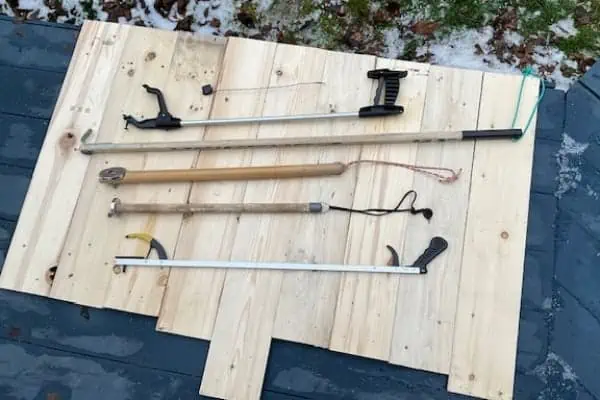Now that you’ve selected a tent and figured out how to set it up, let’s consider some more tips to get the best use out of it and to make it last for many years.
The fly that came with the tent is essential. No matter what the weather is like at set-up time, put the fly on the tent because it, and the floor, are the only waterproof parts on the structure. You and all your equipment will be soaked in short order if you don’t use the fly.
All the seams on the fly and the floor should be seam-sealed prior to the use. Seam sealer usually comes with the tent, but is available where camping equipment is sold.
The fly also has tie-down loops, to which you can add short shock-cord loops and light, sturdy cord to secure the tent to nearby bushes or self-made rock-piles.
The stress caused by wind can be eased by the elastic cord. The elastic cord stretches with the wind pressure on the tent and eases the strain on the tent pegs and peg loops. You should always tie your tent down any time it is set up in an open area, like an alpine meadow or a beach.
Use the manufactured “foot-print.” A foot-print is a tent accessory which goes under the tent and is the same shape as the tent floor, attaching to the tent with pegs. It helps to water-proof the tent floor and protects it from cuts and abrasions. If you don’t already have one, you can make one by cutting a tarp or piece of plastic to the same size as your tent floor. However, this home-made type likely won’t be as durable nor peg down as well.
Most modern backpacking tents can be picked up while still set up, held upside down and shaken to remove sand and twigs. Small plastic whisks and dust-pans are also available, although carrying these around in your backpack means extra weight.
If a tent is wet when taken down, it should be set up or hung to be completely dried before storage. Even with synthetic materials, dampness can have long-term effects on the lifetime of the tent.
Weather extremes and regular usage can lead to damage of zippers, floor, door netting and the material making the tent and fly. Repair kits from the manufacturer or simple generic kits are available locally and repairs should be done ASAP.
Duct tape is invaluable for quick repairs in the field – even a small amount wrapped around a tent peg will come in handy if you don’t want to carry the whole roll.
Many tents have been damaged or ruined by airborne ashes and sparks from the campfire — especially the big fires we all want after supper. Your set-up location should be up-wind and at least 20-30 metres from the fire location. If the wind suddenly changes, dampen down the fire or at least put a tarp over the tent.
When the weather allows, keep the doors open as much as possible (screens zipped up tight) to allow ventilation and minimize condensation, which collects on your sleeping bag and other equipment.
In the tight confines of a small tent, snoring can be a major problem. In such a case lean over and give your buddy a little kiss on the cheek before bed. You can then sleep like a stone while your pal lies awake in fear of what might happen next.




